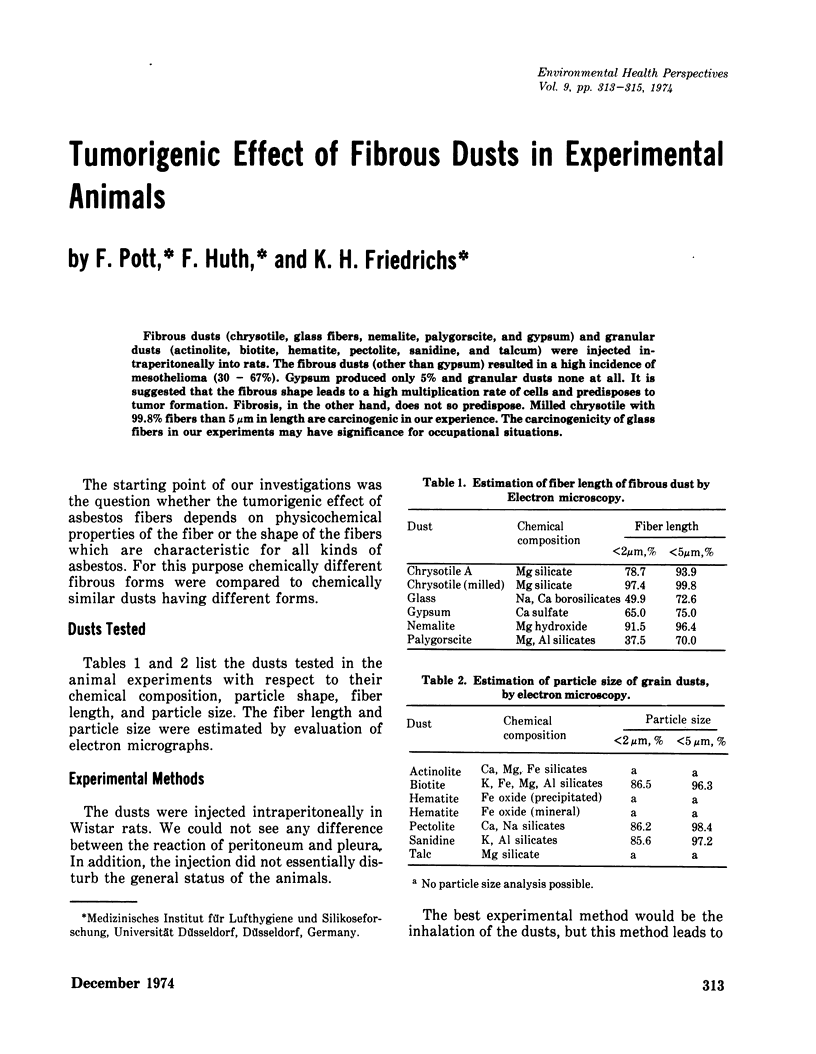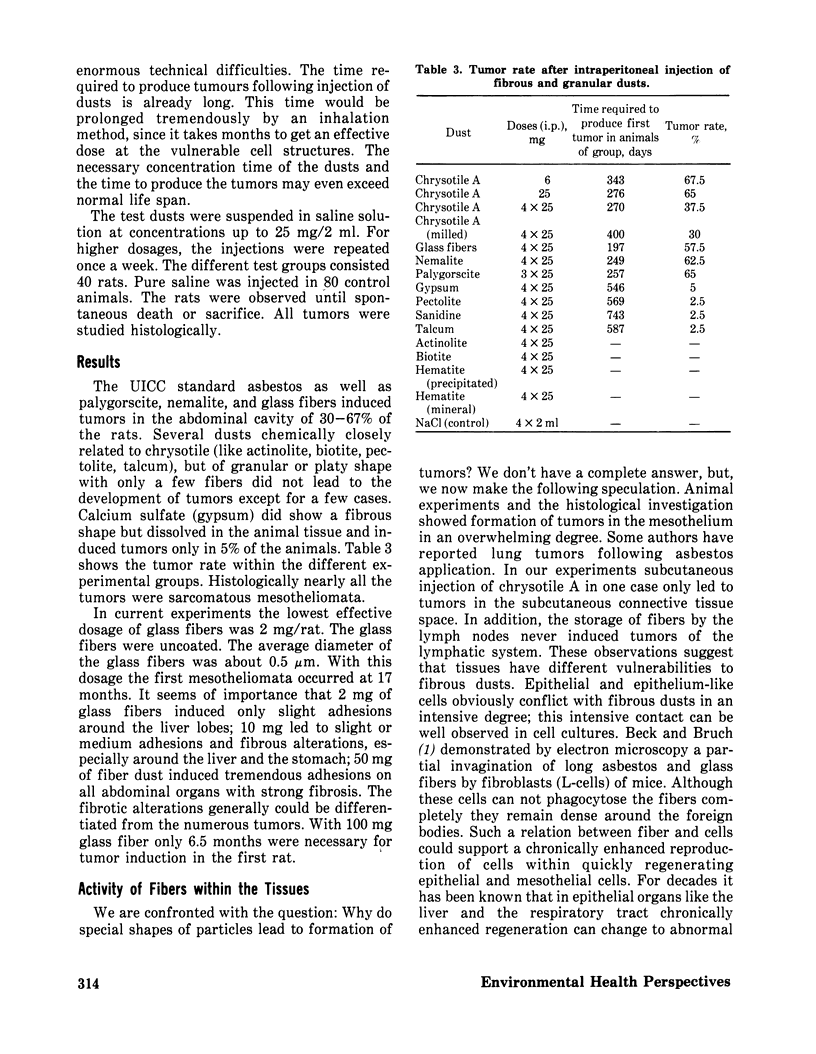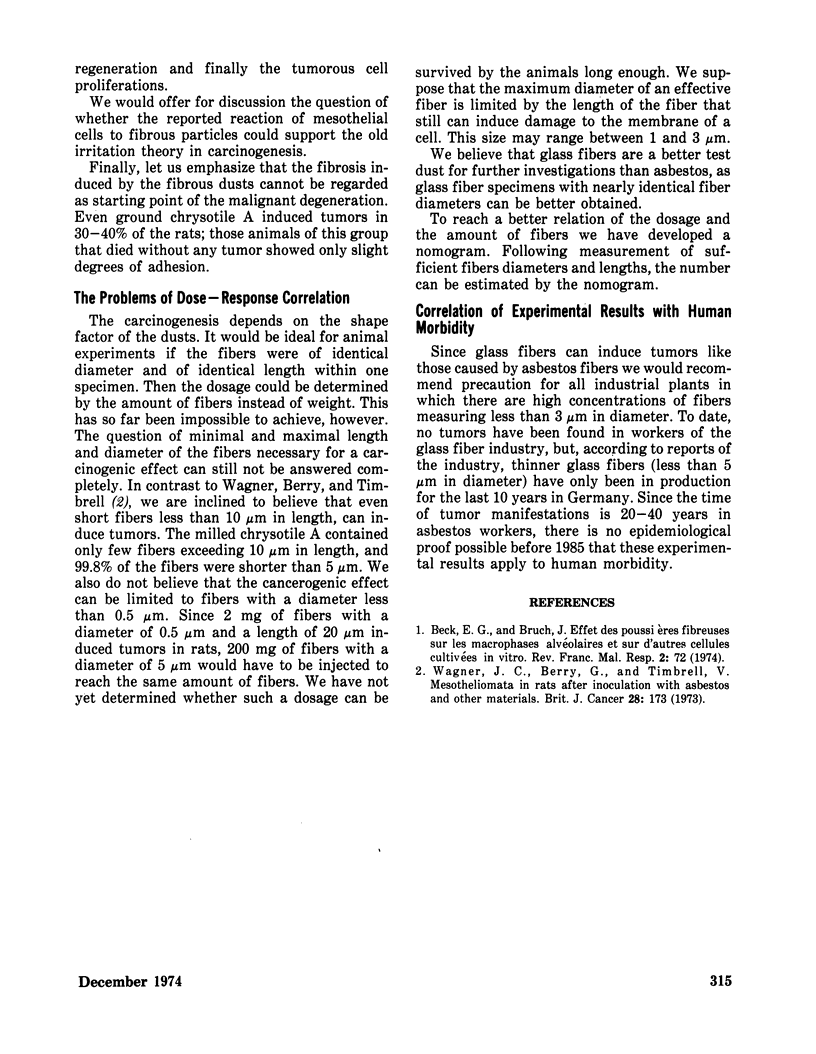Abstract
Fibrous dusts (chrysotile, glass fibers, nemalite, palygorscite, and gypsum) and granular dusts (actinolite, biotite, hematite, pectolite, sanidine, and talcum) were injected intraperitoneally into rats. The fibrous dusts (other than gypsum) resulted in a high incidence of mesothelioma (30 – 67%). Gypsum produced only 5% and granular dusts none at all. It is suggested that the fibrous shape leads to a high multiplication rate of cells and predisposes to tumor formation. Fibrosis, in the other hand, does not so predispose. Milled chrysotile with 99.8% fibers than 5 μm in length are carcinogenic in our experience. The carcinogenicity of glass fibers in our experiments may have significance for occupational situations.
Full text
PDF


Selected References
These references are in PubMed. This may not be the complete list of references from this article.
- Wagner J. C., Berry G., Timbrell V. Mesotheliomata in rats after inoculation with asbestos and other materials. Br J Cancer. 1973 Aug;28(2):173–185. doi: 10.1038/bjc.1973.134. [DOI] [PMC free article] [PubMed] [Google Scholar]


